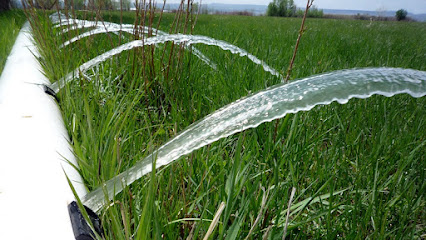Food security: solely a water problem?
For my final post, I thought it would provide useful context to consider some of the other factors contributing to food-related issues in Africa to avoid framing it as a one-dimensional problem. This means that many of the solutions I have proposed throughout this blog will not alleviate food issues in Africa in isolation. The factors discussed in this post also play a significant role.
The previous post looked at the potential of virtual water to alleviate food shortages through importing water-intensive agricultural commodities. However, this approach appears far-fetched considering affordability issues of local produce in most African countries. Food affordability is the main driver of food choice and a barrier to consumption of nutritious foods. For example, only 24% of children in Eastern and Southern Africa receive a minimum balanced diet leading to widespread micronutrient deficiencies (UNCF, 2019). Interestingly, evidence suggests that issues of food affordability in Africa are unique. The lowest-spending quintile of Zambian households face far greater affordability barriers than the equivalent group in other countries, whereas affordability results are unchanged between the highest-spending Zambian households and other countries (Ryckman et al., 2021). This frames the food problem as one about access rather than production.
I thought it would be interesting to look at some of the underlying causes of this. From my research, I found that international trade policies have a telling impact on food affordability. African food imports from the EU total $20 billion per year. Agriculture is heavily subsidised in Europe making it cheaper than local produce. African farmers are pushed out of the market whilst dependence on food imports and sensitivity to international food price shocks increases (DPA, 2017). Furthermore, the EU uses escalation tariffs that tax processed commodities at a higher rate than raw ones. This punishes African exporters as they are forced to sell raw goods so don't profit from the significant value that arises during processing (Aziz et al., 2017). For a population so dependent on agriculture for livelihoods, a combination of these factors threatens food affordability.
Grain processing plant
Following on from the video in my first post, there is an unsurprisingly high correlation between conflict and food issues. The maps below reveal an inverse relationship between average levels of conflict and active cropland. While this is subject to a plethora of geopolitical factors, its impact in Africa is exacerbated due to barriers to investment that prolong the recovery effort. For example, it is widely agreed that infrastructural damage is the driver of current food insecurity in Angola as it hampers food distribution including that of foreign aid (Bowen & Steinberg, 2013).
Conflict (left) and active cropland (right), (Koren & Bagozzi, 2016)
To summarise, there are factors other than water that contribute to food issues in Africa. However, I hope that this blog has conveyed the potential of water through its depth and breadth of influence. That said, I believe the significance of managing water resources is only set to increase with climate change. Going forward, water could be the critical factor in determining Africa's food security.




Thanks for following my blog, Mihir! I really appreciate the feedback throughout.
ReplyDelete